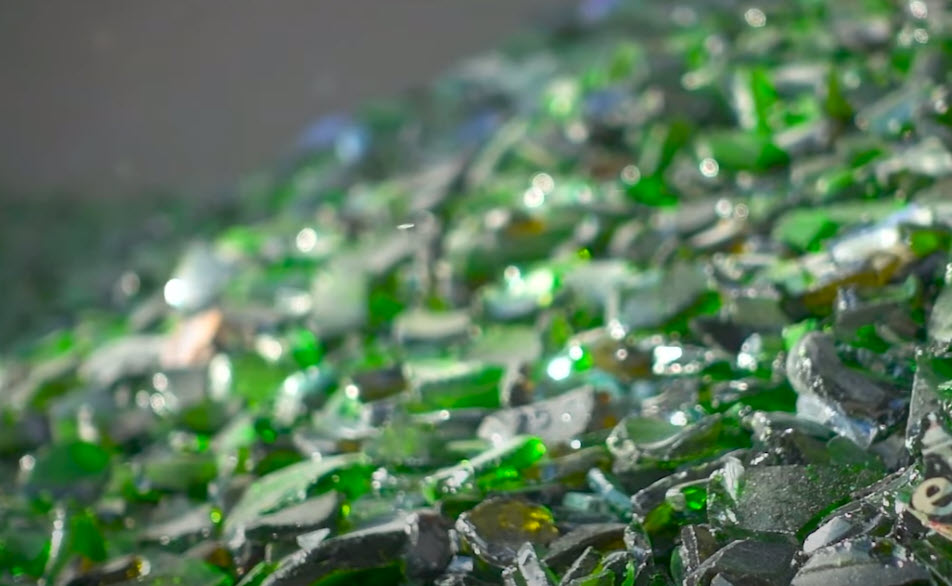
Can Glass Be Recycled?
Find out how glass recycling works and which common glass items can be recycled in some areas.Byline: BTB Author
October 20, 2025 / Time to read: 5 minWhen it comes to materials that can be recycled, glass is pretty spectacular. That's because — unlike some other materials, like paper — it can be melted and reformed without losing its quality. But if you're not so clear how glass recycling works, or how to do your part, we can help.
Keep reading to learn the benefits of glass recycling, how glass is recycled and the kinds of glass that can often be recycled.
Why Is Glass Recycling Important?
Recycling glass can
Environmental Benefits
Conservation of natural resources: Recycling glass helps conserve resources by reducing the need for raw materials such as sand, soda ash and limestone. It also minimizes the environmental impact of mining and extracting these resources.
Energy savings: Recycling glass waste requires significantly less energy than producing new glass from raw materials.
Reduction in greenhouse gas emissions: The reduced energy consumption in the recycling process leads to lower greenhouse gas emissions contributing to climate change.
Closed-Loop System: Recycling glass supports a closed-loop system where old glass is continuously remelted and remade into new glass products.
Decreased landfill use: Glass waste is non-biodegradable and can take thousands of years to break down in a landfill. Recycling glass, rather than tossing it in the trash, reduces the volume of waste sent to landfills.
Economic Benefits
Cost savings for manufacturers: Using recycled glass to create new glass products is often more cost-effective than using virgin materials. These savings can result in more competitively priced glass products.
Job creation: The recycling industry creates jobs in collection, sorting, processing and manufacturing.
How Does Glass Recycling Work?
The glass recycling process starts with collection from homes and businesses and ends with new products, ready to be used and recycled again.
1. Collection
Residents place their glass recyclables in designated bins or curbside for collection. They may also bring their glass recyclables to drop-off centers that accept glass. Businesses and restaurants that generate large amounts of glass waste usually have specialized collection services to handle their recyclables.
2. Sorting
Once glass waste is collected, it's sorted by color (clear, green and brown). Different colors of glass are processed separately to produce new glass products of the same color. Sorting can be done manually by recycling facility workers or with the help of automated systems. Sorters also remove contaminants such as metals, plastics and ceramics.
3. Cleaning
The collected glass is thoroughly cleaned to remove any residual food, labels and other contaminants. The cleaned glass is then crushed into small pieces known as cullet. Crushing glass makes it easier to process.
4. Processing
Any remaining metal contaminants, such as bottle caps or aluminum foil, are removed using magnets and eddy current separators. The cullet is screened to make sure it's uniform in size. Larger pieces may be removed and crushed into smaller pieces.
5. Melting and Reforming
The cullet is melted in a furnace at temperatures around 3090°F. The molten glass is then formed into new products using various techniques, including:
- Blowing for bottles and jars
- Pressing for tableware and lenses
- Rolling and drawing for flat glass for windows and mirrors
- Fiber production for glass fibers used in insulation and other applications
6. Cooling and Annealing
The newly formed glass products are gradually cooled in an annealing oven to make the glass more durable. The finished products run through quality control checks to make sure they meet industry standards and specifications.
Which Common Glass Items May Be Recycled?
It's important to know that glass recycling is not available in all areas. It's best to check which glass types are accepted before you recycle them. With that said, many areas accept some or all of the following:
- Beverage bottles
- Food jars
- Cosmetic jars and bottles
- Pharmaceutical containers
- Drinking glasses
- Bowls and plates
- Perfume and cologne bottles
- Candle jars
- Baking dishes
- Storage containers with lids
Can All Types of Glass Be Recycled?
While many glass items are recyclable (reminder to check your local guidelines!)
- Window glass and mirrors contain coatings and treatments that make it unsuitable for standard recycling.
- Incandescent, fluorescent and LED bulbs contain different types of glass and hazardous materials that require special handling.
- Pyrex and heat-resistant glass is made to withstand high temperatures, which means it's unsuitable for recycling with standard glass.
- Beakers, test tubes and other lab equipment is often made from borosilicate glass, which has a higher melting point and different properties than container glass.
- Glass from picture frames may contain adhesives and other non-recyclable materials that can contaminate clean glass.
- CRT monitors may contain lead that introduces hazardous contaminants into the recycling stream.
- Composite glass, like laminated or coated glass used for car windows and certain buildings, is complicated and expensive to recycle.
Conclusion
Recycled glass remains a valuable resource. Before you add those jars and bottles to your recycling bin, remember to check your local guidelines to confirm which types of glass are accepted.
To learn more about glass recycling, and find out if Republic Services accepts glass in your area, visit our
